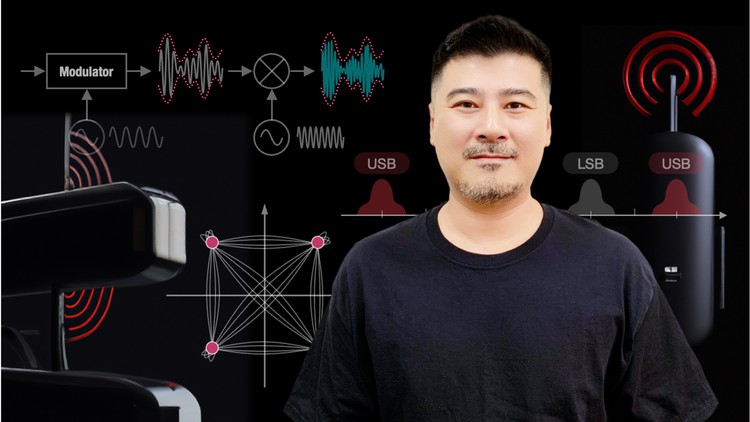
Never again struggle with comprehending the concepts of RF transceiver and digital communications.
What you will learn
Modulation and demodulation techniques for wireless communication.
RF transceiver architecture and its principles.
Skills to comprehend RF transceiver system.
Phasing techniques.
Constellation diagrams.
Description
Nowadays, having a deep understanding of wireless communications enhances the career prospects of electrical and electronics engineers.
- Are you fascinated by the world of wireless communications and eager to explore its underlying principles?
- Are you having difficulty comprehending the complexities of modulation, transceiver architectures, and digital communication techniques?
- Are you seeking for a comprehensive course that can assist you in mastering the fundamental skills required for wireless communication systems?
Look no further than “The Ultimate Crash Course for RF Transceiver Fundamentals” – The final course in The Tao of Phasor Series.
The aim of this course is to provide a simplified and easily understandable approach to RF transceiver and digital communications.
This course encompasses the fundamental knowledge required to gain entry into the field of RF transceivers and digital communications:
- With high-quality content and insightful lessons, you’ll have a solid foundation in RF transceivers and digital communications.
- Our focus is not just on the HOW, but also on the WHY and the evolution of analytical methods in this field.
- We will highlight the crucial factor – the time-varying phasor, in comprehending RF signals and systems.
- We will present specific examples of modulated signals and their conversions in frequency to provide a clear understanding.
- Without difficult math!
By the end of this course:
- You’ll have a solid foundation in wireless transceiver architecture, modulators, and demodulators. To name a few, linear transmitter, linear receiver, polar transmitter, polar recevier, I/Q modulator and demodulator, DSB/SSB modulator, etc.
- You’ll learn the purposes of VCOs, phase-locked loops, mixers, power amplifiers, and low-noise amplifiers, etc.
- You’ll learn about thec concepts of modulation techniques such as AM, FM, PM, amplitude shift keying (ASK), phase shift keying (PSK), quadrature amplitude modulation (QAM), OQPSK, pi/4-QPSK, MSK, etc.
- You’ll learn the practical application of the Hilbert transform, analytic signals, and phasing techniques.
- You’ll also gain a practical understanding of pulse shaping and optimum receivers.
- You’ll be well on your way to mastering the art of wireless communications.
Join us on this journey and discover the fun parts of RF transceivers and digital communications!
Course Highlights:
- Development of Radio Transmission
- What is Modulation?
- Spark-Gap Transmitter
- Fessenden and Continuous Wave
- Vacuum Tube
- Armstrong
- The Key to Radio Downsizing
- Why Modulation?
- Modulation and Transmitter
- Amplitude Modulation (AM), Frequency and Phase Modulation (FM and PM), and Angle Modulation
- Linear Modulation and Complex Envelope
- Linear Modulator (IQ Modulator)
- Linear Transmitter
- Polar Transmitter
- Demodulation and Receiver
- Linear Demodulation
- Linear Receiver
- Polar Receiver
- Modulated Spectrum
- Double-sided and Single-sided Spectrum
- Double sidebands (DSB) Spectrum of AM Signals
- DSB and SSB Spectrum of Upconverted Signals
- Spectrum of PM & IQ-modulated Signals
- Complex Envelope
- Envelope Simulation
- Definition of Hilbert Transform
- Transformation of a Cosine Wave
- Spectrum Efficiency
- A Simple Analytical Signal
- Analytical Signal of a Modulated Signal
- Phasing Techniques
- Can Digital Signals Be Transmitted?
- QPSK
- Symbols
- Constellation Diagram
- BPSK and 8PSK
- QAM
- Pulse Shaping
- Inter-symbol Interference (ISI)
- OQPSK and pi/4-QPSK
- Optimum Receiver
- Digital Signals in Transceivers
Content